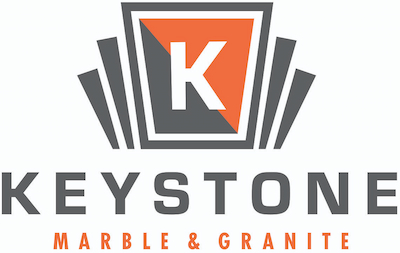Quartz, one of the most abundant minerals on Earth’s surface, is known for its breathtaking beauty and versatile applications. It is a natural stone similar to granite and marble.
It has many varieties, like stunning amethyst, mysterious smoky quartz, and golden citrine. Quartz crystals and their different types have dazzled people for hundreds of years.
What to Know about Quartz in General?
Quartz is a mineral composed of silicon and oxygen atoms. It is known for its crystal-like appearance and durable structure. Quartz has many exceptional abilities, making it a favorite material used in different industries for many other purposes.
It can be used in jewelry making due to its beauty and elegance. Moreover, it can generate electricity when pressured; therefore, it is also used as an important component in electrical devices like computers and radios.
It is important to note that there is more than one type of rock called quartz.
The second one is an engineered stone mainly used in home improvement projects such as quartz kitchen countertops.
The manufacturing process involves the natural stone getting mixed with manufactured materials such as resins and pigments to create a more durable version that is highly resistant to outside factors such as moisture and food spills.
Related Read: Quartz Applications and Uses
How Is Quartz Formed? (Simply Explained)
The incredibly long process of quartz formation starts with magma. Magma contains various minerals, and those minerals also include oxygen and silicon. As this magma slowly cools down and solidifies over thousands of years, these two ingredients interlock and crystallize.
Silicon and oxygen atoms form tetrahedral structures, thus creating the framework of quartz crystals. This specific and unique formation results in quartz properties that have become synonymous with it. Its exceptional hardness, unique transparent appearance, and piezoelectric qualities make it so valuable and popular.
The conditions under which quartz slabs are formed determine the type of quartz that is formed.
For example, pure quartz is formed from silica-rich compositions and is clear. As more minerals are introduced to the silica dioxide while still molten, the more colorful the quartz crystal will be. These impurities create various quartz crystal types with different properties and colors.
The formation of quartz is also heavily influenced by geological factors such as high heat and pressure. The surrounding conditions impact the size and the clarity of the crystal.
Moreover, the depth at which the crystallization occurs is also an essential factor. For example, quartz crystals formed under higher pressures and lower temperatures produce larger and more flawless quartz slabs that can be used to cover larger areas such as quartz countertops and other decorative purposes.
Other factors, such as radiation exposure, can also affect the crystal. One such example is smoky quartz, which owes its distinctive hues to the radiation it is subjected to.
Usually, quartz crystals are found within the cracks and crevices of already-existing rocks. These cracks and crevices act as a pathway for the mineral-rich liquids to seep through; therefore, it is an excellent area for quartz crystals to form and grow.
Over time, these veins can start to yield significant deposits, and they become more and more fruitful. This causes such areas to be crowded with quarries and miners.
Is Quartz a Rock?
Quartz is not a rock; it is a mineral. However, it is a component in many types of rocks, including sedimentary, igneous, and metamorphic rocks.
Quartz often appears as a mineral that makes up a considerable amount of the composition of the rock. Similarly, it can also be found as fully formed crystals within the rocks.
For example, the natural stone granite, an igneous rock, generally contains a significant amount of quartz crystals. Another example is sandstone. It is a type of sedimentary rock, and quartz can commonly be found in it.
How are Quartz Countertops Made?
Quartz countertops have gained prominence as they dazzled people with their unique and eye-catching beauty, long-lasting durability, and resilience. It is one of the most popular countertop materials, available in various colors, and can withstand wear and tear.
Quartz can have a wide range from low to high quality depending on its purity and where it is quarried. Such attributes will significantly increase or decrease the cost of the countertops. In other words, there is an option for every budget.
Quartz countertops are mainly composed of quartz sandstone. This unique quartz made out of quartz mineral and sand is a stone that blends the durability of quartz alongside the intricate patterns and colors of sandstone. This mixture creates countertops that are as durable as they are gorgeous.
When stone countertops are concerned, their quality is the most important factor to consider. High-quality quartz countertops are made to withstand the test of time and ensure they retain their beauty and functionality for years to come.
The creation process of quartz countertops begins with sourcing and quarrying the natural quartz crystals. They are selected carefully depending on their quality, color, and density. The crystals that are chosen are then crushed into small particles that are uniform in size.
Afterward, these pieces are mixed with resins and pigments to create a highly resistant and durable result. The ratio of quartz crystals to resin can vary, but generally, it is around 90% quartz to 10% resin. As the pigments are added, the stone becomes highly customizable, creating a wide range of options.
The components are mixed thoroughly to create a homogenous mixture. This is then compacted and formed into slabs using a special vibration process. The reason behind such attention to detail is to ensure that no air bubbles are stuck in the slab.
The formed slabs are subjected to a curing process. In this stage, the slabs undergo immense heat, which hardens the resin, thus solidifying the quartz countertop material.
Although quartz countertop manufacturing might sound complicated, it is necessary to ensure that the countertops created in the end are incredibly durable, sturdy, highly resilient, and long-lasting.
Final Words
In conclusion, the formation of quartz takes millions of years and is a very strenuous process. It takes great pressure and heat to form these complex crystals that adorn our everyday lives.
Quartz crystals are later processed to create the highly sought-after quartz slabs so that they can be turned into countertops. It is one of the most popular choices among all countertop materials as it possesses natural beauty with a wide range of colors, patterns, and veins.
If you want to employ this fantastic material in your house to bring a timelessly fashionable aura alongside functionality, you can always contact us to learn more about quartz. Alternatively, if you are interested in a consultation, don’t hesitate to request one from our expert team for a more customized experience.


